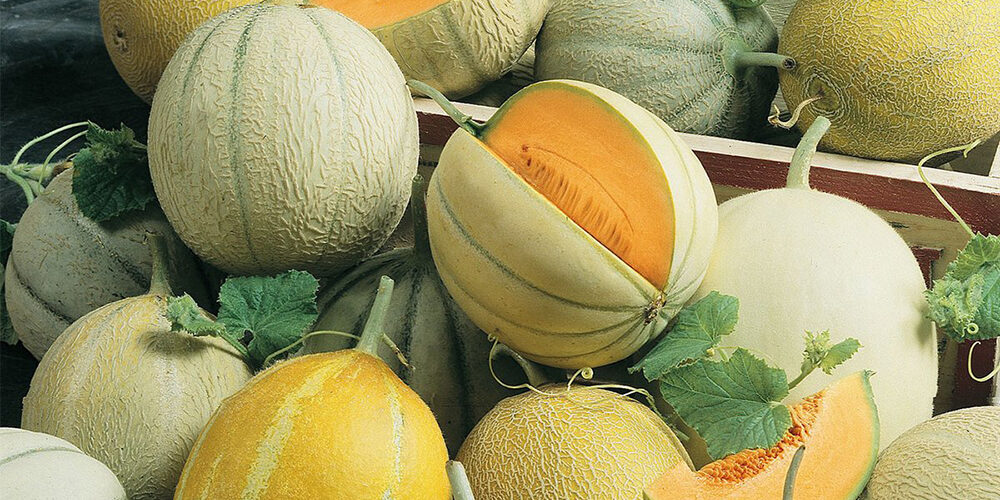Growing Cantaloupes
Posted On April 6, 2020

Cantaloupes, or muskmelons, are a delicious, heat-loving fruit with a relatively long growing season, making them especially well-suited for southern gardeners.
What is commonly referred to as a ‘cantaloupe’ is not actually a true cantaloupe—rather, a type of muskmelon. (True cantaloupe has a rough, warty rind and is not widely grown or commercially available in the US.) Their cultural and growing requirements are very similar to other melons and they have a net-like, tan rind, with sweet orange flesh. The names muskmelon and cantaloupe are used interchangeably.
Planting
- Amend soil with aged manure or compost before planting.
- Growing the vines in raised rows, known as hills, ensures good drainage and will hold the sun’s heat longer.
- If you are in a cooler zone, start seeds indoors about a month before transplanting. Cantaloupe vines are very tender and should not be transplanted until all danger of frost has passed.
- If you live in warmer climes, you can direct sow seeds outdoors, but wait until the soil temperature warms to at least 65 degrees to avoid poor germination. Plant seeds one inch deep, 18 inches apart, in hills about 3 feet apart.
- If you have limited space, vines can be trained to a support, such as a trellis.
Care
- Cantaloupe likes loamy, well-drained soil. Handle them gently when you transplant. Add lots of compost to the area before planting and after planting.
- Mulching with black plastic will serve multiple purposes: it will warm the soil, hinder weed growth, and keep developing fruits clean.
- Fertilize when vines start growing.
- Row covers are a good way to keep pests at bay.
- While melon plants are growing, blooming, and setting fruit, they need 1 to 2 inches of water per week. Water in the morning, and try to avoid wetting the leaves. Reduce watering once fruit are growing. Dry weather produces the sweetest melon.
- If you’ve had an exceptional amount of rainfall during the ripening stage, this could cause bland fruit.
- Once fruit begins to grow, prune end buds off vines. Your plants may produce fewer melons, but they will be larger and of better quality.
- Vines produce male and female flowers separately on the same plant. They often begin producing male flowers several weeks before the females appear. (Don’t be discouraged when the first blooms do not produce fruit.)
- Blossoms require pollination to set fruit, so be kind to the bees!
Pests/Diseases
- Aphids
- Cucumber Beetles
- Squash Vine Borer Moths
- Fusarium Wilt
Harvest/Storage
- When rinds begin to change from green to tan or yellow, the melon is probably ripe, but be careful not to pick too early.
- Look for a crack in the stem where it attaches to the fruit. This is a sign of ripeness as well. The fruit should be easy to separate from the vine, but if they fall off by themselves they are usually overripe.
- Harvest melon when vines are dry, and be careful not to damage them.
- They will soften after harvesting, but will not continue to sweeten off the vine.
- Cantaloupe can be stored uncut for 5 or 6 days. If cut, they can last in the refrigerator for about 3 days, wrapped tightly in plastic.
Recommended Varieties
- ‘Hale’s Best Jumbo’ — 80-90 days to maturity. Produces 3-pound, aromatic melons.
- ‘Minnesota Midget’ — 70-80 days. Early variety suited for Northern gardens. Produces 1-pound, sweetly flavored melons.
- ‘Bush Star’ — 90 days to maturity. Bush variety suits gardeners with limited space.
- ‘Ambrosia’ — 85 days to maturity. Among the sweetest varieties.
Website: www.almanac.com